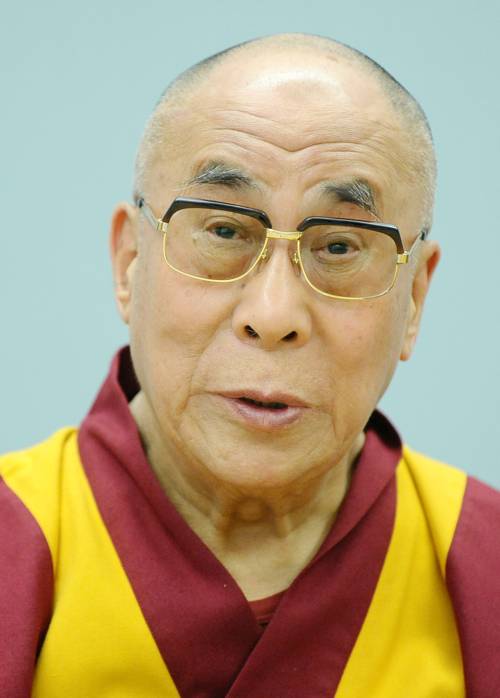
FAQ About Tenzin Gyatso (14th Dalai Lama)

Who is Tenzin Gyatso?
Tenzin Gyatso is the 14th Dalai Lama, the spiritual leader of Tibetan Buddhism. Born on July 6, 1935, in Taktser, Tibet, he was recognized as the reincarnation of the 13th Dalai Lama at the age of two. He is known globally for his teachings on mindfulness, compassion, and his efforts to promote peace and human rights.

What are the main teachings of the 14th Dalai Lama?
The 14th Dalai Lama, Tenzin Gyatso, emphasizes teachings on compassion, non-violence, and inter-religious harmony. He advocates for secular ethics and mindfulness, encouraging individuals to cultivate forgiveness and understanding in daily life.

Why did the 14th Dalai Lama leave Tibet?
Tenzin Gyatso fled Tibet in 1959 following a failed uprising against Chinese control. The situation in Tibet had become increasingly dangerous, and his escape was necessary to preserve his life and allow him to continue advocating for Tibetan autonomy from abroad.

Where does the 14th Dalai Lama live?
Since his exile from Tibet in 1959, the 14th Dalai Lama has resided in Dharamshala, India. This city is the seat of the Tibetan government-in-exile where he continues his work and teachings to this day.

What is the Dalai Lama's role in Tibetan Buddhism?
The Dalai Lama serves as the spiritual leader of Tibetan Buddhism. Traditionally, he is considered a manifestation of Avalokiteshvara, the Bodhisattva of Compassion. His role involves providing spiritual guidance and leading efforts for the cultural and political well-being of Tibetans.

How is the Dalai Lama chosen?
The Dalai Lama is believed to be reincarnated. After the passing of a Dalai Lama, monks from the Gelugpa tradition search for his reincarnation, guided by various spiritual signs and visions. Once identified, the reincarnate undergoes rigorous spiritual and educational training.

What are some notable awards received by Tenzin Gyatso?
The 14th Dalai Lama has received numerous awards for his peace efforts, including the Nobel Peace Prize in 1989. He has also been awarded the U.S. Congressional Gold Medal, the Templeton Prize, and several honorary doctorates from universities worldwide.

How does the Dalai Lama approach the concept of happiness?
The Dalai Lama teaches that happiness can be achieved through inner peace and compassion. He promotes mindfulness and mental training as means to develop attitudes of kindness and resilience, which contribute to a meaningful life.

Has the Dalai Lama met with any world leaders?
Yes, the Dalai Lama has met with numerous world leaders and influential figures to discuss peace, non-violence, and human rights. His dialogues focus on promoting understanding and cultivating compassionate societal approaches.

What is the Dalai Lama's stance on Chinese-Tibet relations?
The Dalai Lama advocates for the "Middle Way Approach," which seeks genuine autonomy for Tibet within the People's Republic of China, rather than full independence. He promotes dialogue and peaceful coexistence.

What are some of the books written by the Dalai Lama?
The Dalai Lama has authored several books including 'The Art of Happiness,' 'Ethics for the New Millennium,' and 'The Book of Joy.' These works cover themes of joy, compassion, and secular ethics.

How does the Dalai Lama view interfaith dialogue?
The Dalai Lama strongly advocates for interfaith dialogue, promoting mutual respect and understanding among different religious traditions. He believes such dialogues can help foster peace and dissuade conflict.

Does the Dalai Lama engage in political activities?
While historically the Dalai Lama held political power, Tenzin Gyatso retired from his political role in 2011 to focus on spiritual duties. He now promotes peace and Tibetan autonomy through non-violent means.

What is the relationship between the Dalai Lama and Buddhism?
The Dalai Lama is a leader in Tibetan Buddhism, specifically within the Gelug school. He is regarded as the spiritual leader and a enlightened teacher, whose life and teachings embody Buddhist principles.

How does the Dalai Lama promote human rights?
The Dalai Lama actively promotes human rights through advocacy for religious freedom, cultural preservation, and social justice. He emphasizes non-violence and dialogue as pathways to peaceful coexistence and human dignity.

What impact has the Dalai Lama had on global peace efforts?
The Dalai Lama's emphasis on compassion, non-violence, and dialogue has significantly influenced global peace efforts. He has inspired many through his Nobel Peace Prize-winning initiatives and consistent advocacy for a non-violent world.

Why is the Dalai Lama a significant figure in the modern world?
The Dalai Lama is a significant figure for his tireless advocacy of peace, compassion, and dialogue in an increasingly fragmented world. His ability to engage with people from diverse backgrounds on universal ethical issues has made him an influential global spiritual leader.

What are the Dalai Lama's views on modern education?
The Dalai Lama advocates for a holistic approach to modern education that combines intellectual education with values-based education. He emphasizes educating the heart alongside the mind, which includes developing compassion and emotional intelligence.

How does the Dalai Lama influence Tibetan identity?
The Dalai Lama is central to Tibetan identity as a symbol of cultural and spiritual continuity. His leadership has preserved the Tibetan spirit and religious practices among displaced Tibetan populations around the world.

What are the Dalai Lama’s views on science and religion?
The Dalai Lama views science and religion as complementary. He encourages scientific inquiry and collaboration, particularly in areas like neuroscience, as long as it aligns with ethical and compassionate principles.
